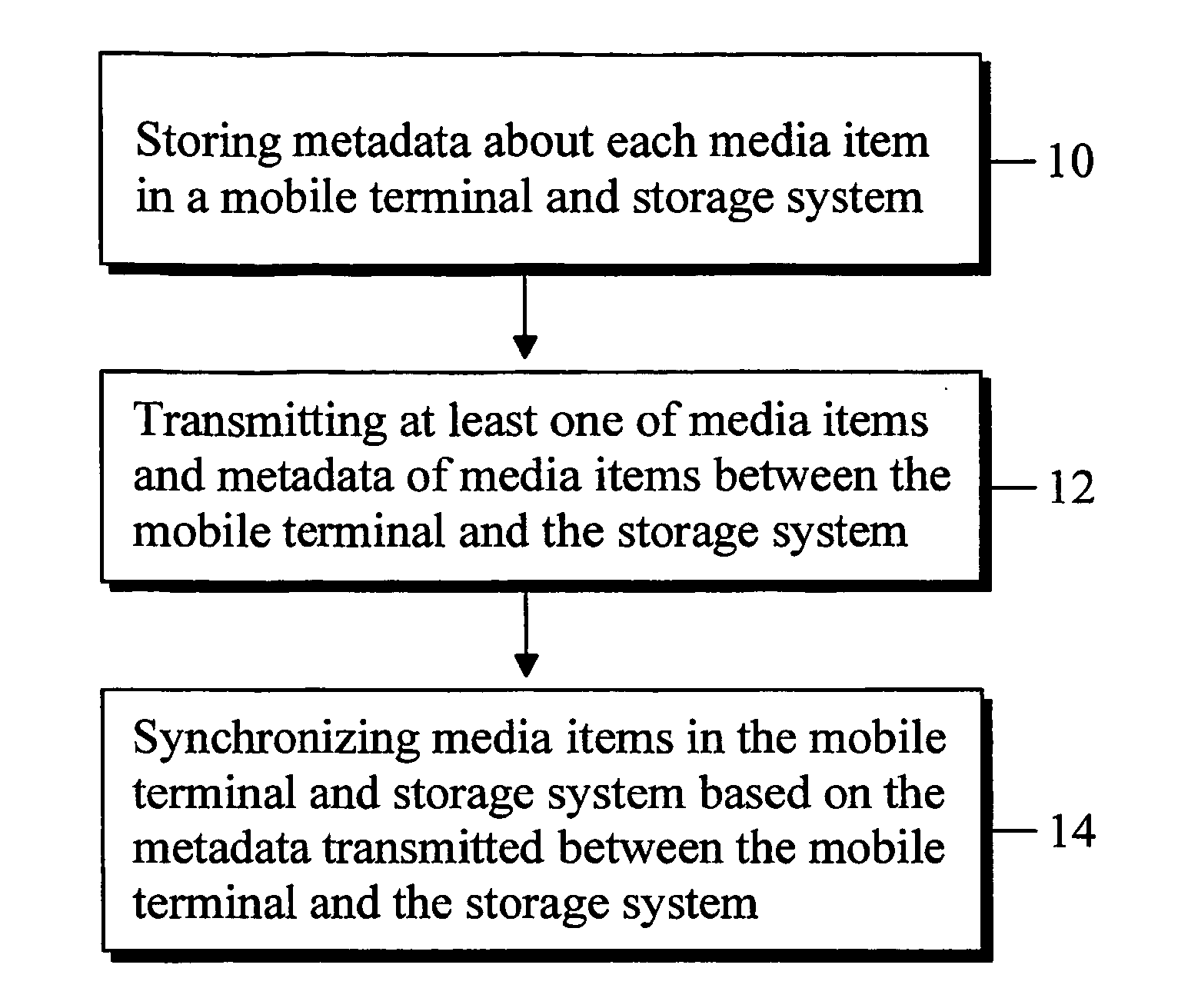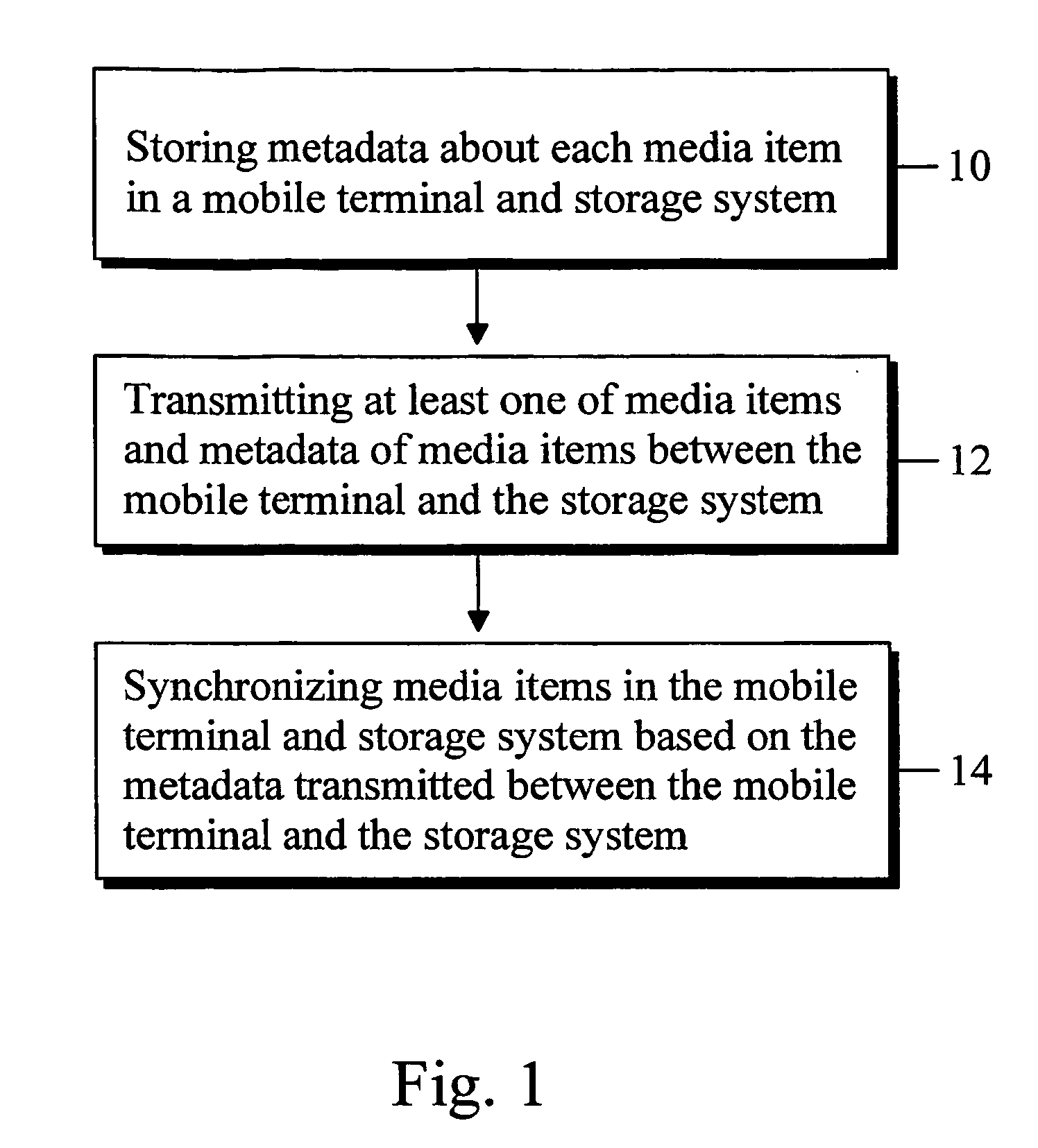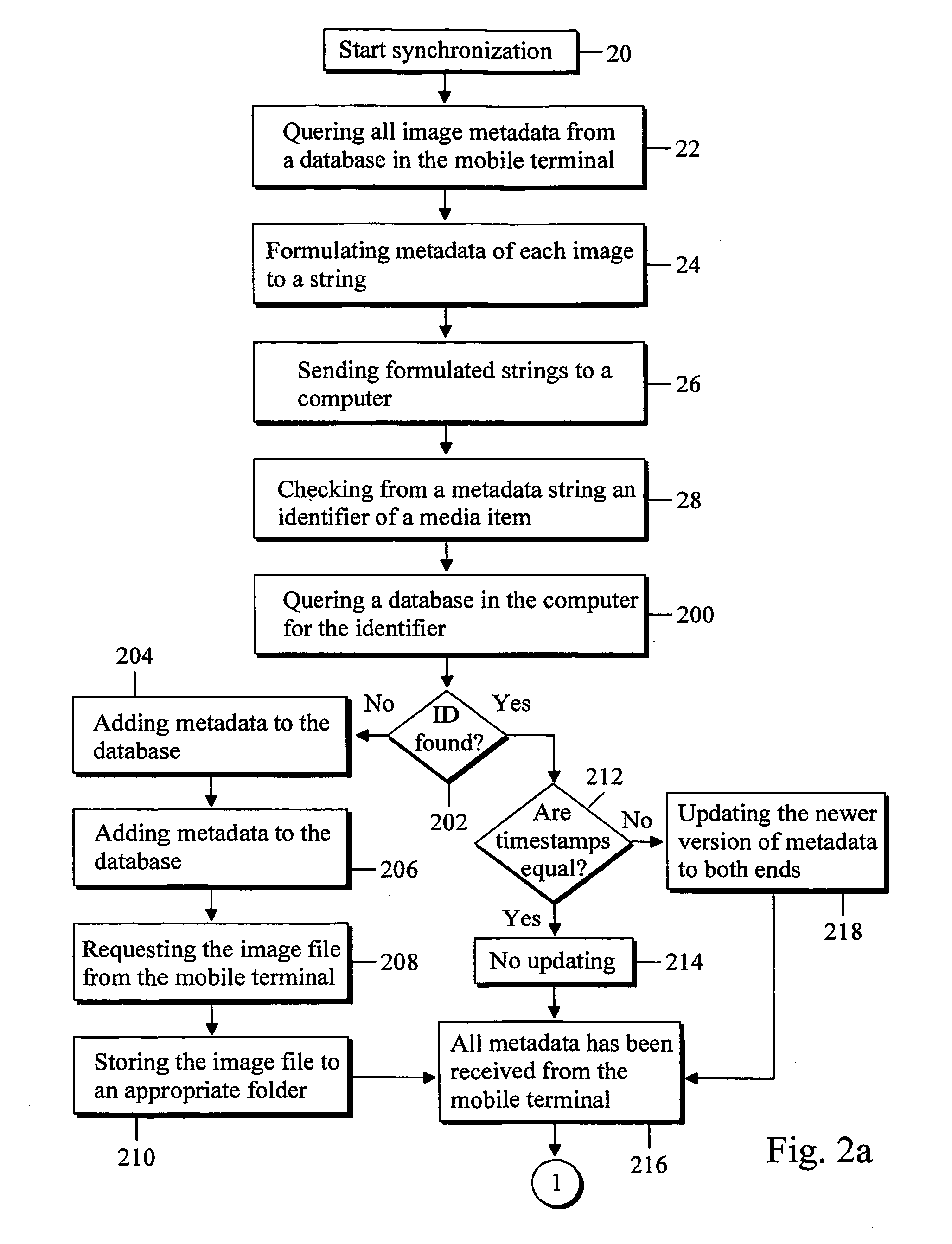Method, system, computer programs and devices for management of media items
- Summary
- Abstract
- Description
- Claims
- Application Information
AI Technical Summary
Benefits of technology
Problems solved by technology
Method used
Image
Examples
Embodiment Construction
[0048] Reference will now be made in detail to the embodiments of the present invention, examples of which are illustrated in the accompanying drawings.
[0049]FIG. 1 is a flow diagram illustrating one embodiment of a method according to the invention. Particularly, FIG. 1 discloses a method for management of media items stored in a mobile terminal and a storage system. As indicated at step 10, metadata about each media item is stored in the mobile terminal and storage system. The metadata comprises information e.g. about the grouping of the media items in the mobile terminal and storage system. At least one of media items and metadata of media items is transmitted between the mobile terminal and the storage system, step 12. Media items in the mobile terminal and storage device are synchronized based on the metadata transmitted between the mobile terminal and storage system, step 14. Changes in media items in the storage system are preferably recognized before the synchronization sta...
PUM
 Login to View More
Login to View More Abstract
Description
Claims
Application Information
 Login to View More
Login to View More - R&D
- Intellectual Property
- Life Sciences
- Materials
- Tech Scout
- Unparalleled Data Quality
- Higher Quality Content
- 60% Fewer Hallucinations
Browse by: Latest US Patents, China's latest patents, Technical Efficacy Thesaurus, Application Domain, Technology Topic, Popular Technical Reports.
© 2025 PatSnap. All rights reserved.Legal|Privacy policy|Modern Slavery Act Transparency Statement|Sitemap|About US| Contact US: help@patsnap.com



